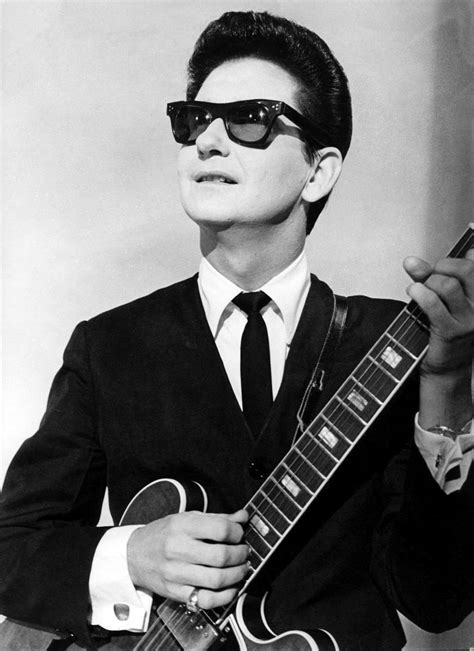
by Byron Christopher
We journalists have different beats: politics, health care, education, Native issues, environment, technology, you name it. Whatever turns people’s cranks, there’s a news bureau or a reporting beat to help keep them informed … and entertained.
For more than 25 years, my beat was federal prisons, provincial jails and remand centres. It was in these so-called penal institutions where I chased down news stories.
I’m often asked what life in prison was like, and what the cons and the guards were like. Most folk haven’t been behind bars, even as visitors. They’re curious. They want to know if being incarcerated is anything like the movies. The short answer is yes. Sometimes. It goes without saying there’s a lot of tension, sadness and tragedy behind those bars. But there’s also humour and some very thoughtful moments. And yes, success stories too. It’s not all negative.
I very much enjoyed the prison beat. That sounds strange, I know, but I liked crime stories, I liked the challenges [especially those I overcame] … and of course, I always got a big kick out of getting a scoop.
Some might find my language in this post offensive. Sorry, but it was part and parcel of covering crime. When I reported from City Hall, the Alberta Legislature or the Courthouse, I wore a suit and tie and used ‘appropriate’ language. But in prison — in the company of those with lengthy criminal records, but short on manners — I donned sweaters and blue jeans and used harsher language. My job was to get through to these guys.
I learned much while “in prison” … for which I’m grateful. Some of my teachers did not have criminal records. But most did …
It was never my goal to become a “criminal-justice” journalist. When I got into reporting, back in the late 1970s, I had a strong interest in foreign development — ‘foreign aid,’ for the less politically correct — and so I did a number of stories on that. I also got to travel to some third-world countries, seeing firsthand the wretched living conditions for so many on this crazy planet of ours.
After I joined the Canadian Broadcasting Corporation [CBC] in the early 80s, the plight of Canada’s Indians grabbed my attention and so I did a lot of stories on Native issues. But those articles — particularly on Native rights and lack of government integrity — drew heat — not only from station management, but from some of my own colleagues in the newsroom. I kid you not. See my post, An Indian Protest: 1988.
It was time for another change. A new challenge and all that.
In the late 1980s, I decided to focus on a beat that was pretty much “owned” at the time by the Edmonton Sun and the Edmonton Journal. The dailies always had great stories from the Edmonton Institution, the Max, as we knew it, on the very northeast corner of the city. The newspapers got great scoops because their crime reporters [Tom Barrett of the Journal and Gary Poignant of the Sun come to mind] took the time to cultivate contacts.
Speaking of contacts, reporter Ed Mason of CHQT Radio and CHED Radio in Edmonton cultivated his police sources and probably landed more exclusive, kick-ass crime stories than any print, radio and TV journalist in the country, not that anyone keeps such stats. But that’s my read. Put it this way, radio stations in Edmonton faithfully monitored Mason’s reports to see if they’d been scooped. Again. The man worked his contacts like Russian David Oistrakh worked his violin.
I would do the same. My plan was to make as many connections as I could — develop working relationships with prisoners, guards, prison management and prison pastors. I would learn from the successful reporters and cultivate these contacts by phoning them from time to time, seeing how they were doing, finding out what was new in their lives … and if there was anything at the prison an inquisitive reporter should know about.
Having a business card is all well and good, but it’s better if the person whose wallet has found a home for your card knows you took a sincere interest in them. There are far too many ‘users’ in the media.
![Prisoner Landon Karas [homicide in Bonnyville, Alberta] waits for visitors. There's evidence to suggest that Karas didn't commit the murder.](https://byronchristopher.files.wordpress.com/2014/12/landon-karas-dec-5614.jpg?w=450&h=680)
Prisoner Landon Karas in the visitor’s room of the Edmonton Institution. A jury found Karas guilty of murdering a woman near Bonnyville, Alberta. A majority of those behind bars are guilty, but I firmly believe that Karas is innocent.
One of my prison stories involved a behind-the-scenes account of a 1991 hostage-taking at a penitentiary in Saskatchewan where shotgun blasts from guards sent two prisoners to their Maker. The exclusive stories landed CBC Radio Edmonton its first major reporting award. More on that later.
When I was at the prisons, I passed out my business card to scores of convicts [guards and management as well], going through my allotment of cards in record time. When I reordered a new batch, our supply clerk called the newsroom to double-check something … “Do you really want your home phone number on your business card?,” she asked. I sure did. Most reporters prefer not to have their home numbers printed on their cards, but I wanted my dealings with those I interviewed to be as transparent as possible. I didn’t feel there was that much of a risk by putting a home number on the card. Still don’t. Nothing untoward ever happened to me outside those prison walls because of stories I did.
Both CBC Radio and 630-CHED [which I would join in 1996] would broadcast more than their share of scoops from the prisons, jails and remand centres. It’s always nice to be first with a story. To use a baseball analogy, landing a scoop is like hitting a home run or a grand slam. On the other hand, re-writing a government news release is like getting on base with a walk.
MYTHS
Before I go further, let’s get one thing out of the way: it’s a commonly-held belief that all prisoners claim they’re innocent. Sorry. Not true. It’s my experience that most cons will readily admit to their crimes. They know darn well why they’re behind bars, and they’ll say so. What they’re often tight-lipped about, though, are details of the crime, especially if it’s a homicide or a crime involving a child. But if you really get to know the cons, they may tell you about some nasty stuff they got away with — including murder.
Toward the end of my reporting career, a con, serving time for a murder, shared that he’d actually killed another man but got away with it. I said, “You’re lucky I’m not your parole officer.” The prisoner wasn’t happy about the killing, but he seemed pleased that police never found out it was him. I never followed up on it. At that point I’d had my fill of murders and dead bodies.
It’s good protocol to let prisoners broach the subject of what they’re in for. Here’s a tip to journalism students: if you’re in the joint trolling for stories, don’t walk up to an inmate and ask what they’re in for. Let them bring it up. They’re expecting you to pop The Question. Surprise them. Don’t.
That’s not to say that inmates feel police played fair, that the judge was fair — or that the news media didn’t look for dirt and sensationalize their crimes. That’s a whole different matter. Generally speaking, cons don’t have a lot of time for the news media.
Another myth is that everyone in the joint deserves to be there. Unfortunately, there are way too many wrongful convictions. The judicial system in Canada is flawed and the result is that far too many innocent people are behind bars. Canada alone has about two dozen [proven] wrongful murder convictions. Incredible. Forgive me for stating the obvious, but that’s so wrong. God only knows how many other wrongful conviction cases are waiting to be exposed. The government in power will go out of its way to make it difficult for these wrongful convictions to come to light — just so people will think the system is on the up and up.

The inner courtyard at the Edmonton Institution. [I snapped this photo in the late 1980s] The shrubbery shown in the photo was removed after cons began to hide knives and other weapons in the plants.
JOHN SCHIMMENS – Prisoner
The head of the Inmates Committee at the Edmonton Institution in the 1980s and 90s, John Schimmens, had a lot of influence and power. He was top prisoner. He could order cons to be killed, or he could stop a hit. Schimmens was a great contact.
Schimmens, a long-time criminal from Calgary, was about a year older than me [I was born in 1949]. With his confident demeanour and his slicked-back hair, Schimmens reminded me of Arthur Fonzarelli, ‘The Fonze’, a fictional character played by Henry Winkler in Happy Days, the 1974-1984 TV sitcom.
Schimmens was doing time for murder, 2nd degree. He’d taken a baseball bat to the head of Renne Hammond of Calgary, beating him to death. For that, he got about ten years or so. The dispute was over a drug debt. I once asked Schimmens, “How much money did this guy owe?” “$100.00,” he said. “God,” I said, “for a lousy hundred bucks you blew away ten years of your life??” You could talk to Schimmens that way and — usually — he wouldn’t get upset.
I can’t recall what our meeting was about, but one day Schimmens and I were alone in a conference room at the Max. We sat at a small table, alongside a bullet-proof glass window that looked into a guard’s office. In that office were two guards. One was out of sight, the other had his back to us. He was sitting on a chair and sipping coffee from a white styrofoam cup.
Schimmens was trying to tell me something, but I was interrupting. Not sure why, but I kept cutting him off. I did it one too many times and the prisoner suddenly lost it! He grabbed my collar and began twisting hard. And I mean hard. I couldn’t breathe. And yes, I finally stopped talking. Through clenched teeth and a shaking fist, Schimmens made this request: “Will you shut the fuck up!?’ At that point, I reached over and grabbed his collar and did the same. Schimmens then released his grip, and so did I. “Fuck,” he said, “I didn’t think you’d ever grab me …”
The guard, still sipping coffee, was oblivious to what had just taken place right behind his back. I did not report Schimmens; that’s not my style. Besides, I had more to gain by keeping my mouth shut [you can take that either way], as Schimmens was a valuable contact.
Another side to prison life that the public rarely saw — or perhaps didn’t want to see — was that convicts like John Schimmens organized fund-raisers for various charities. Schimmens also helped organize events to lift prisoners’ spirits, whether it be a softball game between the cons and my CBC Radio team … or a boxing match featuring combatants from the outside. The man wasn’t all bad.
![One of the socials organized in part by John Schimmens. The wail of bagpipers arriving in the prison's exercise yard gave the prisoners a lift. Notice one con [Ken] pumping his fist in the air.](https://byronchristopher.files.wordpress.com/2015/01/thatcher-max637-2.jpg?w=450&h=280)
One of the socials at the Edmonton Institution. The wail of bagpipers arriving in the exercise yard gave inmates a boost. Check out the smile on Ken, the con on the left wearing a blue jacket.
Schimmens once complained about a remark I’d made one day in anger to some lifers [prisoners serving life sentences, usually for murder]. A prisoner convicted in the shooting death of a police officer had taken a cheap shot at the media and so I fired back, “Is there anyone here who’s in for a brave act?” You could hear a pin drop. Schimmens advice: “Don’t talk to them that way, Byron. You’re destroying what little pride they have.”
Another time, Schimmens pulled me aside and offered this advice: “Don’t trust these guys. 98 percent of them are “pieces of shit.” Be careful with anything they tell you.” In that respect, I guess John Schimmens was on the same page as most correctional officers and parole officers.
Schimmens was eventually given parole — a couple of times — but for some reason — his supporters claim lame excuses — he ended up back in the slammer again. The first time Schimmens made parole, I came across him on the street in Edmonton. He was in a taxi and I was in my old car.
The man got a room in a halfway house in downtown Edmonton, a couple of blocks north of MacEwan University. Schimmens had saved money he made in prison [plus some cash from an injury settlement in which a cell door mangled his hand]. He was a free man. And pumped. He beamed when he showed me paintings he hoped to sell at a profit.
Before I signed out of the halfway house, Schimmens nodded in the direction of a female guard sitting on a couch with a male parolee. The two were necking. “See that broad?” he said, lifting his eyes, “she’s banging the guy.”
We left by a side door. It’s here where Schimmens stopped and pointed to a dumpy, three-story walkup apartment building next door. “They sell a LOT of dope in there,” he said, resting his arms on a mesh fence, “… ironic, isn’t it? … a halfway house right beside a fucking crack house.”
A police source confirmed Schimmen’s intel and I did a story on the location of the suspected crack house for 630-CHED Radio. Just minutes after the item aired on our morning newscast, News Director Bob Layton got a phone call from City Police that two years’ work [surveillance on the crack house] just went down the drain. Layton, a huge police supporter, was clearly disappointed.

The author at 630-CHED Radio in Edmonton. 2000.








“News Director Bob Layton got a phone call from City Police that two years’ work [surveillance on the crack house] just went down the drain. Layton, a huge police supporter, was clearly disappointed.”
Well Byron, enjoyed your article, but not surprised that Bob Layton was disappointed. Isn’t revealing a drug investigation considered obstruction of justice ?
That’s what they charged Kelowna reporter Kelly Hayes with, when he unveiled (and disrupted) a similar RCMP drug investigation !